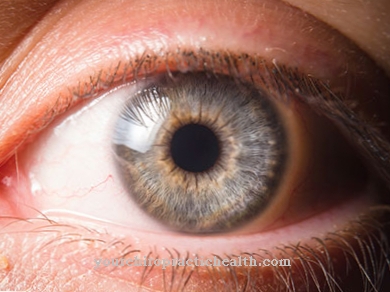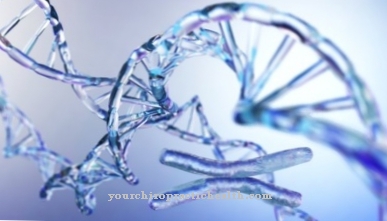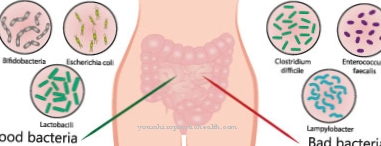Yellow fever is a known and at the same time dangerous tropical disease. Similar to malaria, it is transmitted by mosquitoes. Yellow fever is most common in Africa, Central America, and South America. Since the symptoms of yellow fever are very similar to a normal flu or cold, the disease is often recognized and treated late. Anyone who travels to endangered countries should therefore find out about vaccinations from the responsible tropical institute.
What is yellow fever?

© Chinnapong - stock.adobe.com
Yellow fever is a viral infection that occurs in the tropical regions of Africa and South America. The yellow fever virus is one of the Flavi viruses and is closely related, for example, to the dengue virus and the pathogen causing hepatitis C. The first symptoms of yellow fever are chills and fever, and a slow pulse may also occur.
Nausea and vomiting, mostly with bloody components, as well as a general tendency to bleed due to reduced blood clotting often make yellow fever more difficult. In severe cases, the viral infection can also lead to jaundice. Yellow fever viruses are common in two variations. Urban yellow fever is a major problem in urban areas because it causes epidemics. The Sylvatic yellow fever or jungle fever is the typical manifestation in rural areas.
causes
The infection with yellow fever occurs, similar to malaria, through a mosquito bite. The Egyptian tiger mosquito (Aedes aegypti) is the main carrier of yellow fever and is therefore also called the yellow fever mosquito. But other mosquito species should also come into question. Other ways of infection of yellow fever apart from the sting of blood-sucking insects are not known.
Once the yellow fever virus has penetrated the body, it first affects the lymph nodes. If they have reproduced there, the bloodstream carries them to other organs. The heart, liver, brain and bone marrow are now the targets of the viruses. The pathogens multiply in the tissue cells, causing the infected body cells to die. This leads to serious tissue damage, which manifests itself as bleeding in the digestive tract.
Virus infestation of the heart muscle can have such serious consequences that cardiac arrest is possible in the course of yellow fever. Liver damage as a result of jaundice also means a life-threatening risk for the patient. Often death occurs because several organs fail at the same time.
Symptoms, ailments & signs
Yellow fever is characterized by both a mild and a severe form. More than 85 percent of the symptoms are mild, with flu-like symptoms such as fever, chills, body aches, muscle aches, headaches as well as nausea and vomiting. These 85 percent of those mildly affected usually recover completely.
The remaining 15 percent of the patients are seriously ill and show other symptoms in addition to the usual flu-like symptoms. The additional symptoms of diarrhea, strong thirst, overheated skin, vomiting of bile, mild jaundice, bad breath, cessation of urine production and bleeding in the palate are expressed. After that, the symptoms also decrease in these patients.
In some of the patients the healing process begins. However, there are also those affected who have to go through another very serious phase of illness, which often ends fatally. After a period of relative rest, they have increased internal bleeding. Symptoms like vomiting like coffee grounds, tarry stools or bloody stools occur.
The increased tendency to bleed also leads to frequent skin and mucous membrane bleeding. Furthermore, there is an enormous loss of fluid, which in turn can cause a state of shock. At the same time, the liver often fails, which is indicated by severe jaundice. Kidney failure and neurological failures are also common. Without intensive treatment, death occurs no later than the 15th day of illness.
course
The infection with the Yellow fever virus goes unnoticed for a few days. During this so-called "incubation period", the virus multiplies until the inflammation breaks out after about a week. Fever of up to 40 ° C with chills and upset stomach often subside. Then the yellow fever is survived undamaged and a lifelong insensitivity ("immunity") to the yellow fever virus is the result.
In more than a tenth of all yellow fever cases, a complication arises after the initially mild course. This “toxic phase” of yellow fever is characterized by jaundice and vomiting of blood. Half of all patients who reach the second stage of yellow fever do not survive the infection.
Complications
In many cases, yellow fever heals without major complications. However, if the infectious disease is treated too late or inadequately, the fever can spread to the brain and cause inflammation of the meninges (meningitis). In the further course other vital organs can fail and the patient falls into a coma.
Accompanying liver and kidney failure, massive bleeding can occur which, if left untreated, can lead to death within ten to fourteen days. Other possible complications of yellow fever are cardiovascular disorders and blood vomiting. Depending on the patient's constitution, chronic exhaustion or circulatory collapse can occur, which in turn has physical and emotional effects.
There are usually no complications associated with treating yellow fever. Only fever-lowering medication and the individual home remedies can lead to problems in the case of possible previous illnesses or allergies. A vaccination against yellow fever initially leads to redness, swelling and slight pain.
One in ten patients also has flu-like symptoms such as fever and joint pain. A yellow fever vaccination can rarely cause hypersensitivity reactions such as hives or swelling of the mucous membrane in the throat or even lead to a yellow fever infection of the internal organs.
When should you go to the doctor?
If various symptoms indicate yellow fever, a doctor should always be consulted immediately. If you have severe diarrhea and urination problems after a vacation trip to the tropics, the next route should be to a hospital.
It is also important that headaches, body aches, chills, and fever be examined by a doctor as a precaution. People with immunodeficiency, the elderly, pregnant women and children, or people with cardiovascular problems and thyroid diseases should see a specialist if the signs are even lighter.
People who have had yellow fever in the past are usually immune to re-infection, but they should still be screened to be safe. If you have severe circulatory problems or a noticeably high fever, an emergency doctor must be called immediately. If the person falls into a coma during this time, first aid must be provided until the doctor arrives. The doctor must be informed about how the circulatory collapse occurred.
Doctors & therapists in your area
Treatment & Therapy
There is no causal therapy for yellow fever. All drugs that inhibit virus replication showed no effect on yellow fever. So the doctor has to limit himself to fighting the life-threatening symptoms. To do this, the patient is referred to the hospital and monitored by intensive care there. An adequate supply of fluids to the patient with infusions can only be guaranteed in the clinic. The doctor must compensate for excessive blood loss with blood transfusions.
Because the therapeutic treatment options for yellow fever are limited, preventive measures are of great importance. First and foremost, vaccination is the best protection against an outbreak of yellow fever. With this "active immunization", the doctor injects the patient with a solution with weakened yellow fever viruses that do not cause any disease. However, the body reacts to this with the formation of specific defenses, the so-called "antibodies".
The vaccination against yellow fever lasts for about 10 years. In addition to this very effective measure, everyone who travels into the danger zones should protect themselves from mosquito bites as much as possible. The control of mosquitoes is left to the health ministries of the countries concerned.
Outlook & forecast
A special therapy against yellow fever is not yet available. Only the symptoms are treated. For the majority of infected people, the prognosis is positive. The symptoms subside after a few days. Consequential damage does not remain. However, treatment should not be missed.
A severe form develops in around 15% of those affected. About half of those affected do not survive yellow fever. Fever and pain are treated with medication. The patient is isolated so that the disease does not spread through new mosquito bites. If the yellow fever takes a more severe course, meningitis can break out.
If vital organs fail, the person concerned falls into a coma. Liver or kidney function failures are particularly common. Damage to the kidney can be determined by the presence of protein in the urine. The bilirubin level is significantly increased in the liver.
Those who survive the infection with yellow fever no longer show any symptoms because sufficient antibodies have been formed. It is assumed that there is lifelong immunity to the infection. Vaccination should be given to avoid complications. In some countries this vaccination is even mandatory.
Aftercare
Follow-up care options are generally only available to a very limited extent for yellow fever. First and foremost, the disease must first be treated, although a complete cure is not always possible. In some cases, the life expectancy of the person affected is limited if the yellow fever is detected relatively late.
In order to prevent yellow fever, an appropriate vaccination should be given before traveling to the affected countries. With this fever, the patient depends on purely symptomatic treatment. It should be noted that the person concerned has to drink a lot of fluids to compensate for the loss. Similarly, in some cases, blood transfusions are necessary to fully treat the disease.
The patient should rest as much as possible and avoid exertion or stressful activities. In general, bed rest has a very positive effect on recovery. The body must also be protected from other diseases or infections in order not to put unnecessary strain on the immune system. After a vaccination, you are usually protected against yellow fever for ten years. After this time, the vaccination should be refreshed.
You can do that yourself
If yellow fever is suspected, a medical evaluation is necessary in any case. Once diagnosed, the various symptoms can be treated independently under medical supervision.
First and foremost is the balance of the fluid and mineral balance. Through vomiting and diarrhea, the organism loses various nutrients that must be returned to the body through a full diet and dietary supplements. In addition, bed rest and rest apply.
Light medicines and various home remedies (willow bark extract, peppermint oil, cinnamon, etc.) help against the headache, while the fever can be alleviated with cooling compresses or cold leg compresses. Dietary measures help against nausea and vomiting - especially light foods and herbal teas are indicated.
If the yellow fever enters the second phase, a hospital must be visited. Due to the severity of the symptoms, sleep and rest and drug treatment are recommended. If the outcome is positive, the clinic can be left after one to two weeks. The return to everyday life should take place slowly and under constant observation by someone you trust, as there is an acute risk of accidents due to the persistent coordination disorders. In addition, follow-up visits with a doctor should be carried out to ensure that the yellow fever is completely overcome.



.jpg)

.jpg)






.jpg)



.jpg)










.jpg)
